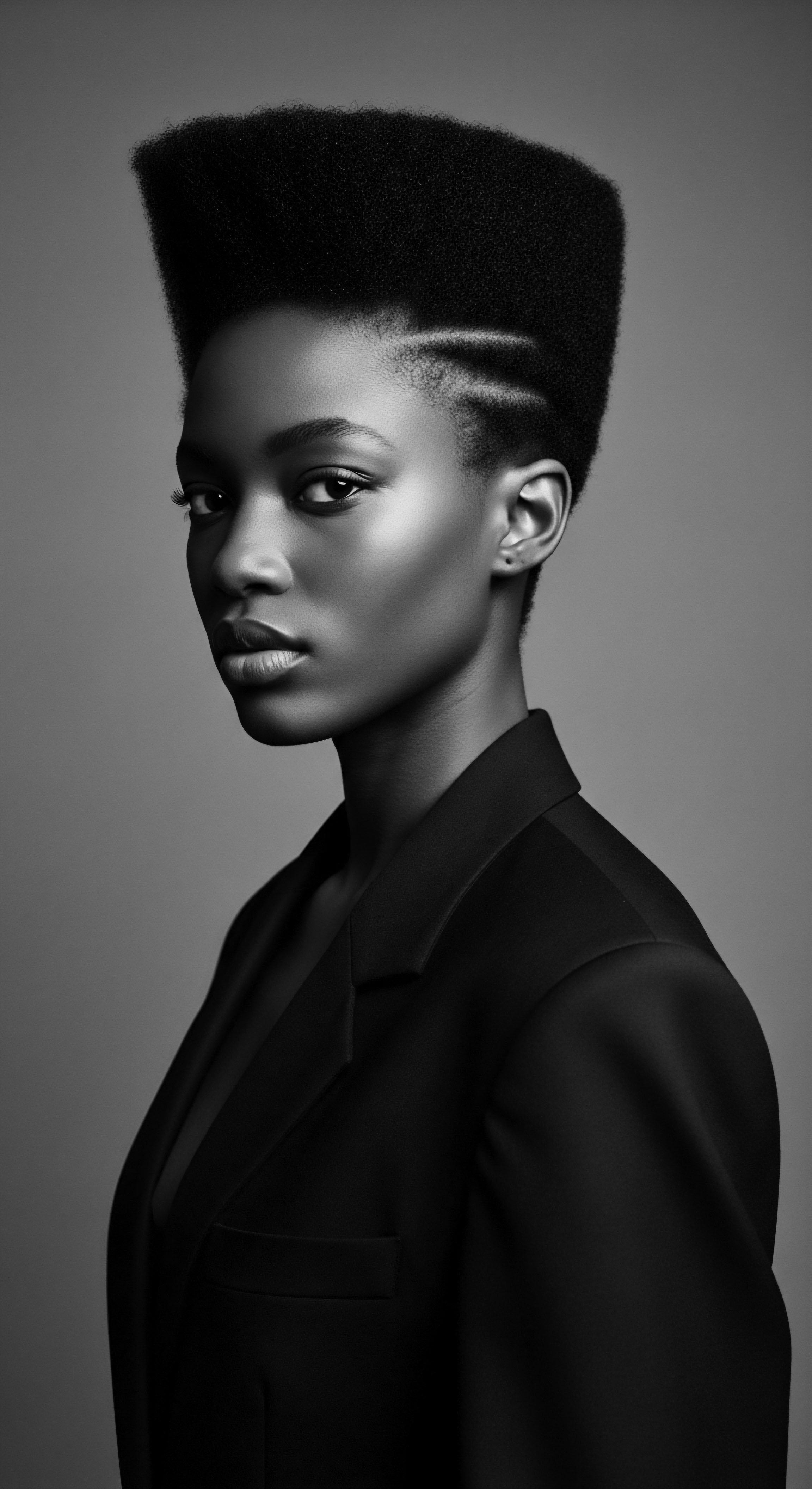
Roots
To truly comprehend how the earth itself became a shield for textured hair, one must journey beyond the surface of a strand, past the visible curl, and deep into the very heart of its ancestral memory. This journey begins not with a product, nor a technique, but with the land that birthed us, the soil beneath our bare feet, and the wisdom whispered through generations. Our coils, our kinks, our waves – they are not merely fibers; they are living archives, imprinted with the elemental embrace of continents, shaped by sun, wind, and the protective bounty of the earth.
The intrinsic structure of textured hair, often elliptically shaped and possessing a unique distribution of disulfide bonds, inherently offered a degree of natural defense. This biological architecture, a testament to millennia of adaptation, tended to clump, forming a denser canopy that could, in its natural state, offer a measure of shade and mitigate the harsh intensity of equatorial sun. Yet, this very structure also presented its own particular needs ❉ a thirst for moisture, a propensity for tangling, a delicate balance easily disrupted by the elements. It was here, in this beautiful reciprocity, that our ancestors found their answers in the earth’s own generosity.

Hair Anatomy Echoes Ancestral Care
Every curl, every twist, speaks a language understood by the oldest hands. The outermost layer, the Cuticle, with its overlapping scales, functions like tiny shingles on a roof. For textured hair, these shingles often lift slightly, making it more porous, more open to receiving and losing moisture.
Ancestral practices understood this intuitively, perhaps without the scientific lexicon we possess today. Their shield was often a seal, a balm derived from the earth to lay these scales flat, to hold the life-giving water within.
Beneath the cuticle lies the Cortex, the heartwood of the strand, responsible for its strength and elasticity. Here, the unique distribution of melanin and protein bundles within textured hair contributes to its distinctive spring and coil. Historically, the vibrancy and resilience of this core were supported by nourishment drawn from plants, clays, and rich oils – a direct infusion from the earth’s pantry.
Ancestral wisdom, rooted in the earth, formed the earliest shield for textured hair, intuitively balancing its unique biology with nature’s protective bounty.

Earth’s Embrace ❉ Early Protective Agents
Long before commercial concoctions, the earth provided a veritable pharmacopoeia of protective agents. Clays, rich in minerals, served not only as cleansing agents but also as scalp purifiers and hair strengtheners, forming a fine, almost invisible film that could deflect environmental aggressors. Think of the ochre-infused hair of Himba women, a practice enduring to this day, where a paste of butterfat, ochre, and aromatic resins serves as both a protective layer against sun and dryness, and a profound cultural marker (Crittenden & Marquardt, 2021). This blend, called “otjize,” demonstrates a holistic understanding of cosmetic, protective, and cultural functions.
- Red Ochre ❉ A vibrant pigment, often mixed with animal fats or plant oils, used by various African communities. Its fine particles formed a physical barrier against sun and wind, while the fats provided moisture.
- Kaolin Clay ❉ Found globally, this white clay was likely used for its absorbent qualities, aiding in cleansing, but also for its ability to form a gentle, protective layer.
- Bentonite Clay ❉ Valued for its drawing properties, it could remove impurities while leaving behind beneficial minerals, potentially strengthening the hair shaft.
Plant-based oils and butters were another cornerstone of this earthly shield. These lipids, extracted from seeds, nuts, and fruits, offered unparalleled emollience and occlusion, creating a barrier that locked in moisture and repelled external damage.
| Natural Element Plant Oils |
| Traditional Source Shea, Coconut, Palm, Argan, Marula |
| Primary Protective Function Moisture retention, cuticle smoothing, UV protection (minor) |
| Natural Element Clays & Pigments |
| Traditional Source Ochre, Kaolin, Bentonite |
| Primary Protective Function Physical barrier against sun/wind, scalp detoxification, mineral infusion |
| Natural Element Resins & Gums |
| Traditional Source Myrrh, Frankincense, various tree saps |
| Primary Protective Function Fragrance, sealant, anti-microbial properties |
| Natural Element These ancestral gifts from the earth provided comprehensive defense and nourishment for textured hair. |
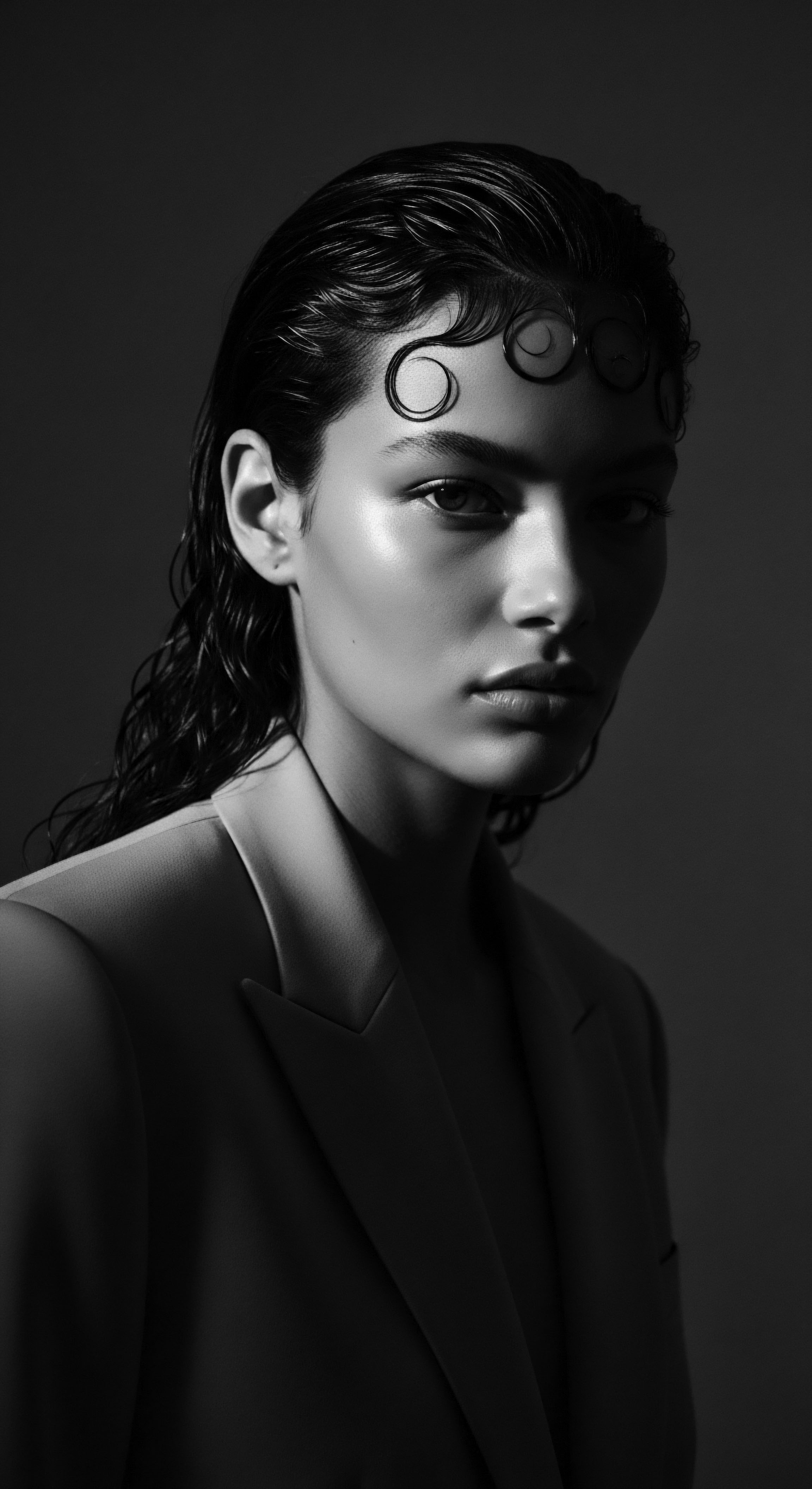
Ritual
The concept of a natural earth shield for textured hair extends far beyond simple application; it is deeply interwoven with ritual, the repetition of practices that sustained hair health across generations. These were not random acts, but deliberate engagements with the environment, passed down through lineage, ensuring hair remained a vibrant symbol of identity, status, and spiritual connection. The earth’s bounty was integrated into daily rhythms, transforming sustenance into sacred care.

Ancestral Styling Techniques as Earthly Fortifications
Styling, for many ancestral communities, was an act of fortification. Protective styles, such as Braids, Twists, and Locs, did more than adorn; they encased the hair, minimizing exposure to environmental elements. When combined with earth-derived ingredients, these styles created a dynamic shield. For example, the practice of braiding hair with various plant fibers or incorporating threads spun from natural materials (like cotton or wool) further reinforced the physical structure, adding an external layer of defense against abrasion, sun, and dirt.
Consider the intricate braided patterns seen across various West African cultures, where each plait was an architectural feat designed to protect the hair ends – the oldest and most vulnerable parts of the strand. These styles were often adorned with beads made from clay, seeds, or shells, literally connecting the hair to the earth’s natural elements, reinforcing its protective capacity. Such adornments were not merely decorative; they held symbolic meaning, sometimes indicating marital status, age, or spiritual affiliation, while also serving as a tangible form of physical protection for the hair (Byrd & Tharps, 2014, p. 19).

How Did Traditional Tools Channel Earth’s Wisdom?
The tools used in ancestral hair care were often direct extensions of the earth. Combs carved from wood, bone, or horn smoothed and detangled, distributing natural oils from the scalp along the hair shaft. Gourds or hollowed-out stones served as vessels for mixing oils and clays.
These implements, crafted from natural materials, were not inert objects; they were imbued with the spirit of the earth, connecting the person to their natural environment during acts of care. The tactile sensation of wood against the scalp, or the cool clay being worked into the strands, deepened the connection to the source of the shield.
In some traditions, specific plants were used directly as tools. Certain leaves or twigs, when crushed, released mucilage or oils that aided in detangling or conditioning. These were biodegradable tools, leaving no trace but healthier hair, further underscoring the harmonious relationship with the environment.
Styling rituals and earth-crafted tools transformed natural elements into a living defense for textured hair, reinforcing identity and connection to heritage.
The ritualistic application of earth-derived substances was often accompanied by specific chants, songs, or prayers, imbuing the act of care with spiritual significance. This added another layer to the “shield,” protecting not just the physical strands but also the spirit of the individual. Hair, considered a spiritual antenna in many African belief systems, needed this multi-dimensional protection.
The continuity of these rituals across the diaspora speaks to their profound effectiveness and cultural importance. From the protective cornrows of enslaved Africans, a means to preserve seeds and hide escape routes, to the natural hair movements of today, the legacy of earth-based protection persists. The very act of caring for textured hair, particularly with traditional or natural ingredients, becomes a deeply rooted act of self-preservation and ancestral honoring.
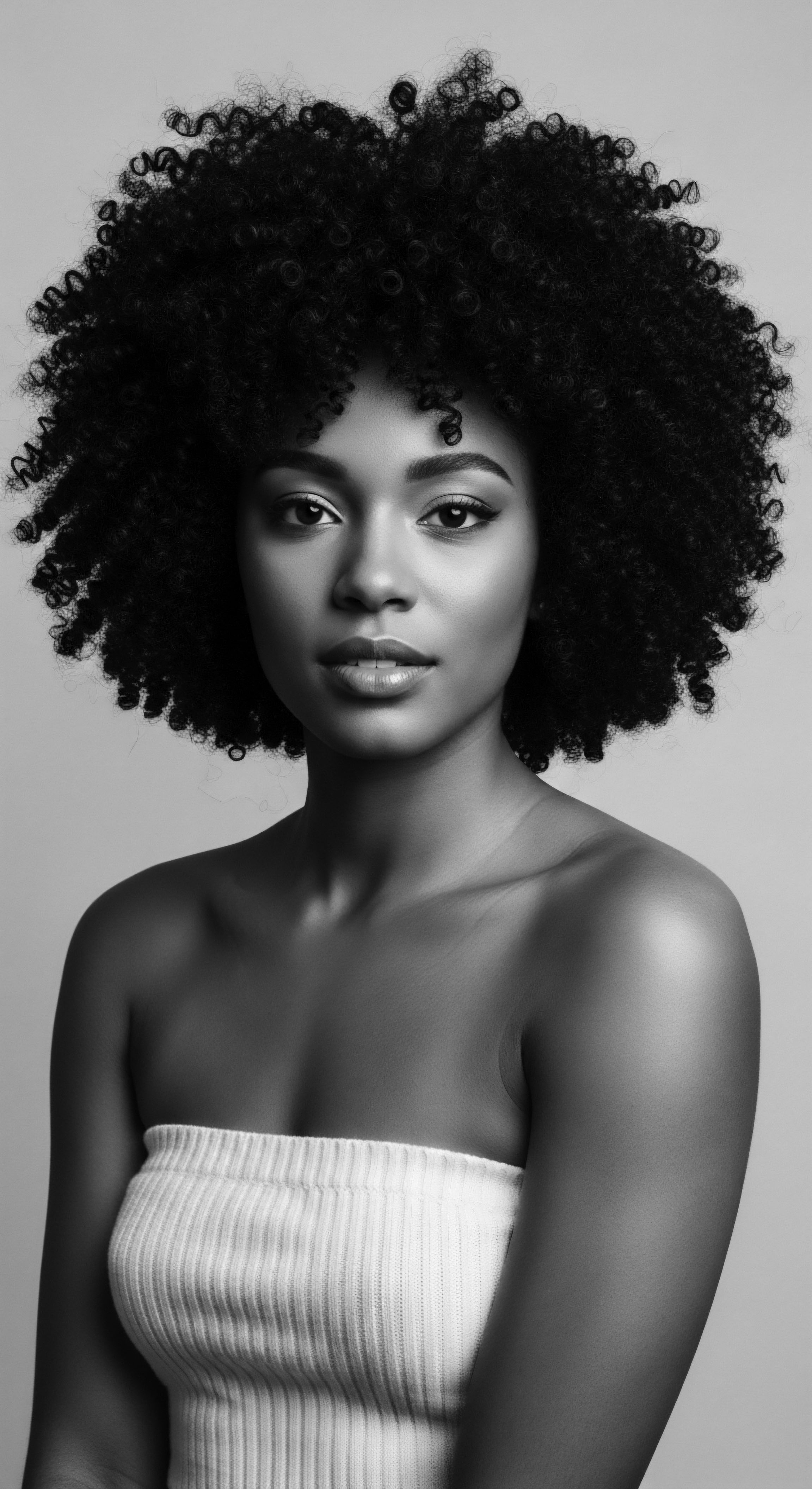
Relay
The narrative of how natural earth elements historically shielded textured hair is a story of enduring knowledge, a relay race of wisdom passed from ancient hands to modern practice. This transmission speaks to the profound efficacy of these ancestral methods, methods often validated by contemporary understanding, even as the scientific language to describe them has evolved. The shield of the earth was not merely a passive barrier; it was an active participant in maintaining the vitality and spiritual integrity of textured hair, forming a living bridge between past and present.

How Did Ancestral Wisdom Inform Modern Hair Regimens?
The foundations of personalized textured hair regimens today often echo the wisdom of ancestral practices. Before the era of mass-produced cosmetics, individual needs were met directly from local botanicals and geological resources. A personalized regimen, therefore, meant understanding one’s hair porosity, density, and the local environmental conditions, then selecting the appropriate clays, oils, and plant extracts. This bespoke approach, rooted in observation and trial-and-error over centuries, allowed for fine-tuned protection.
The practice of hair “oiling” or “greasing” has been a staple in many Black and Indigenous communities for generations. This tradition, often involving plant-based oils like shea butter, palm oil, or castor oil, created an occlusive layer that helped retain moisture and reduce friction, thus acting as a physical shield against breakage and environmental dryness. Modern science confirms the lipid barrier function of these oils, highlighting their role in protecting the hair shaft and scalp.
- Shea Butter (Vitellaria paradoxa) ❉ A rich emollient sourced from the shea tree native to West Africa. Historically, it protected hair from harsh sun and dry winds, providing deep conditioning and a protective film.
- Palm Oil (Elaeis guineensis) ❉ Used across various African communities. Its fatty acid profile helped seal moisture into the hair, offering a natural barrier against damage.
- Castor Oil (Ricinus communis) ❉ Popular in many Afro-diasporic traditions, particularly in Jamaica. It was often warmed and massaged into the scalp and hair, believed to promote growth and protect strands.
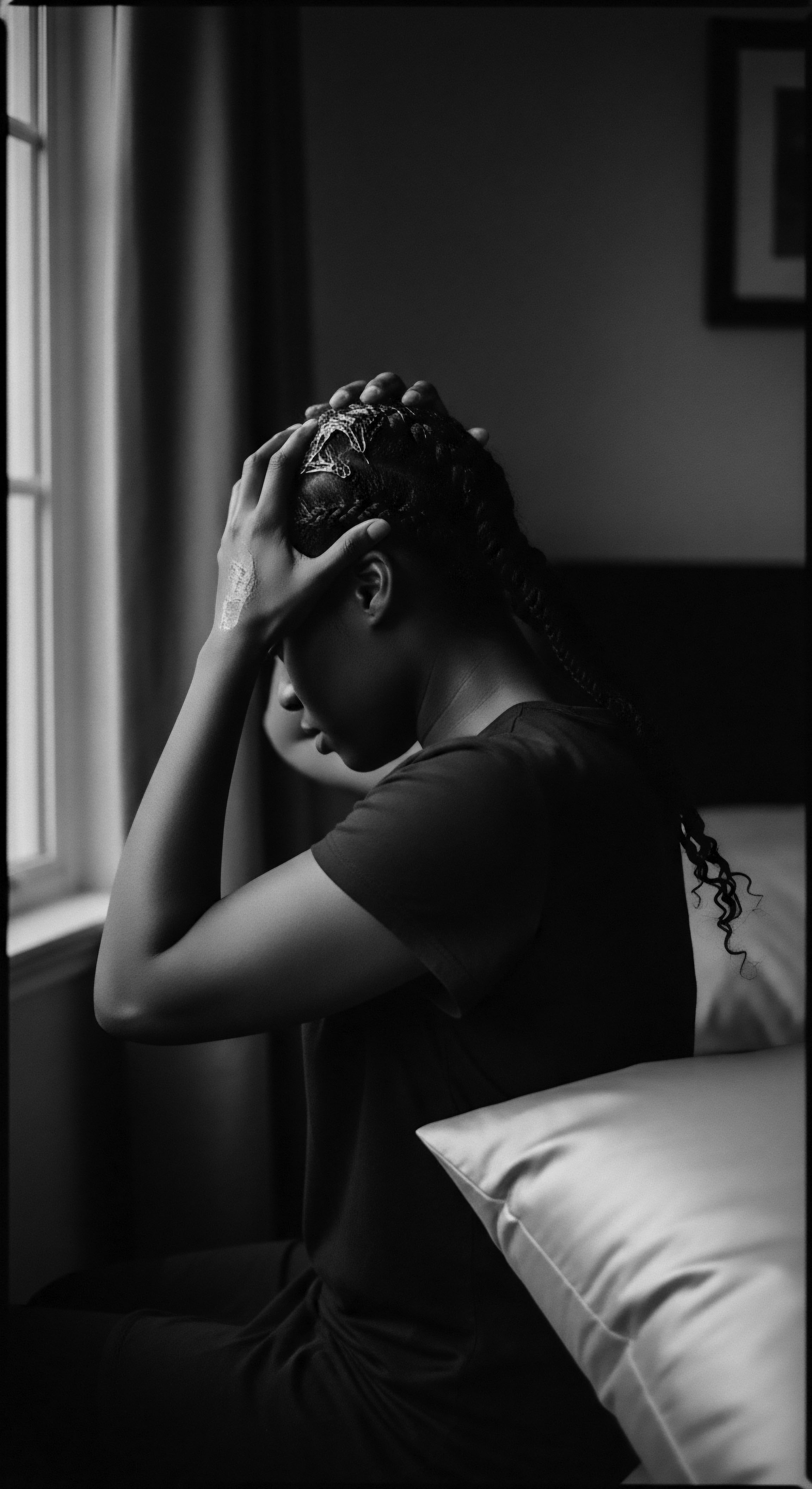
Understanding Nighttime Protection and Its Heritage?
The concept of nighttime hair care, particularly the use of head coverings, has deep historical roots. Before satin bonnets and silk scarves became commonplace, various forms of natural cloth or even simply wrapping the hair with large leaves or soft animal skins provided protection during sleep. This practice prevented moisture loss through evaporation, reduced tangling from friction against coarse sleeping surfaces, and preserved intricate daytime styles.
It was an intuitive understanding of the hair’s vulnerability during rest, ensuring its shield remained intact even as the wearer slept. These historical forms of nighttime sanctuary speak to a continuous vigilance over hair health, an active element of the earth’s enduring shield.
The continuity of these practices, from ancient cloth wraps to contemporary satin bonnets, illustrates a profound collective knowledge. This collective insight across generations demonstrates a persistent commitment to preserving the integrity of textured strands, ensuring they remain vibrant and robust. The historical imperative for protection was not simply about aesthetic preservation; it was also about maintaining hair’s strength for elaborate ceremonial styles, or simply ensuring it was healthy enough to serve its role as a spiritual connector and cultural beacon.
Ancient practices of personalized care and nighttime protection, passed down through generations, demonstrate the persistent role of earth’s elements in shielding textured hair.
A compelling historical instance of a natural earth shield in action is found among certain groups within the Himba people of Namibia. Their use of “otjize,” a mixture of butterfat, red ochre, and aromatic herbs, on their hair and skin is a powerful demonstration of environmental adaptation and protection (Crittenden & Marquardt, 2021). Applied daily, this paste shields against the sun’s harsh ultraviolet rays and the arid desert winds, preventing moisture loss and scalp irritation. Beyond its physical protective qualities, otjize holds profound cultural significance, symbolizing beauty, status, and connection to the earth and ancestors.
The rich red hue, derived from the earth, mirrors the color of the land and is central to their aesthetic and spiritual identity. This practice stands as a living testament to how earth’s materials were intentionally and ceremonially integrated to form a complete shield – physical, aesthetic, and spiritual – for textured hair.
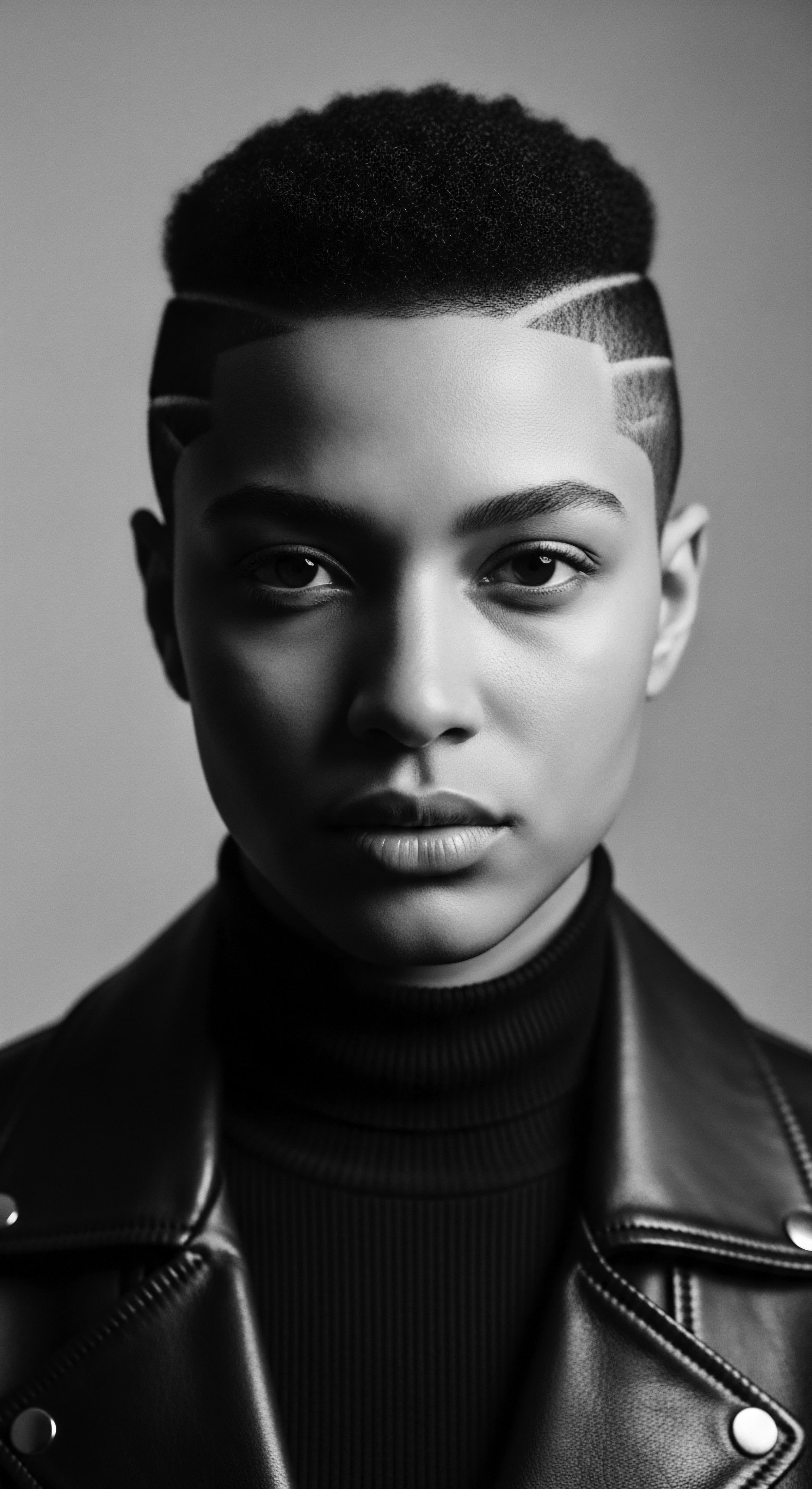
Reflection
Our exploration of how natural earth elements historically shielded textured hair is a testament to the profound relationship between humanity, our strands, and the very ground we walk upon. From the essential structure of the hair itself, a marvel of biological design, to the intelligent use of clays, oils, and botanicals, we see a story of deep understanding and reverent reciprocity. This wisdom, born of necessity and nurtured by tradition, transformed the raw gifts of the earth into a robust defense against the sun, wind, and the everyday wear of life.
The shield was not a single, static entity; it was a living, breathing partnership with the planet. Ancestral hands, guided by intuition and generations of accumulated knowledge, shaped regimens and rituals that safeguarded textured hair, allowing it to flourish, to tell stories, and to signify identity. These practices, though often lacking modern scientific terminology, were prescient in their efficacy, laying the groundwork for many of the hair care principles we recognize today.
To understand this legacy is to appreciate the enduring resilience of textured hair and the communities that carry its heritage. It is to recognize that our hair, in its magnificent variations, is a conduit to the past, a living archive of wisdom passed down through touch and tradition. As we continue our own hair journeys, we carry forward this ancestral shield, an invisible mantle woven from earth’s generosity and human ingenuity, connecting us irrevocably to the “Soul of a Strand.”

References
- Byrd, Ayana D. and Lori L. Tharps. Hair Story ❉ Untangling the Roots of Black Hair in America. St. Martin’s Griffin, 2014.
- Crittenden, Ann, and Anne Marquardt. “The Hadza and Himba.” In Encyclopedia of Evolutionary Psychological Science, edited by Todd K. Shackelford and Viviana A. Weekes-Shackelford, 2405-2412. Springer, 2021.
- Walker, A’Lelia Bundles. On Her Own Ground ❉ The Life and Times of Madam C.J. Walker. Lisa Drew Books/Scribner, 2001.
- Diawara, Manthia, and Lydie Diakhaté. “Hair and the Black Imagination.” Nka ❉ Journal of Contemporary African Art, no. 14, 2001, pp. 36-47.
- Opoku, Kwasi. West African Traditional Religion. FEP International Private Limited, 1978.
